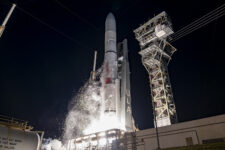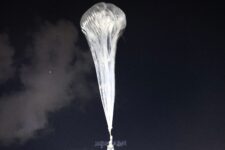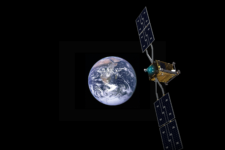
The Space Force is pursuing a series of efforts to explore alternatives to GPS satellites for military positioning, navigation and timing. (US Army Photo by Sgt. Khalan Moore)
MCLEAN, VA. — The Space Force’s Commercial Space Office will soon be granting $40 million in small grants to commercial firms for technologies to provide alternatives to GPS satellites, COMSO director Col. Rich Kniseley said today.
“We as a service, you know, just even how we do business, we rely on PNT. This entire world revolves around GPS,” he told the Potomac Officers Club 2024 Space Summit here.
The office expects shortly to issue Direct-to-Phase II Small Business Innovation Research grants to contractors involved in the “Alternative Positioning, Navigation, & Timing (AltPNT) Challenge,” based on ideas that came to the fore during COMSO’s June 21 “reverse industry day” on the issue, Kniseley said. The challenge was launched in November by SpaceWERX, the Space Force’s innovation hub run by Air Force Research Laboratory. And on Nov. 29, the Department of the Air Force released an accompanying SBIR solicitation, asking industry to respond by Feb. 21. The objectives of that solicitation were stated as follows:
To provide resilient, multi-source, continuous, high quality, navigation and timing information by providing alternative, GPS-independent, navigation augmentation sources of positioning, navigation, and timing (PNT) data for the warfighter, civil and commercial user. Alt-PNT can augment GPS or serve as a short/medium-term alternative to GPS if access to GPS signals is denied or degraded.
The COMSO effort is the latest in a series of Space Force initiatives to explore new and different ways to provide forces in the field with crucial PNT signals.
Space Force’s primary acquisition command, Space Systems Command (SSC), is seeking industry input on the possibility of building smaller, lighter and cheaper GPS satellites. Under the Feb. 7 Request for Information (RFI), companies had until Feb. 26 to provide white papers to SSC outlining their capacity to provide a prototype satellite within six to 12 months of any contract. The prototype would be orbited in medium Earth orbit — which is also where the current 31 operational GPS satellites reside.
“The intent of this overall effort is to explore opportunities for non-traditional and/or traditional space vendors to rapidly manufacture, integrate, and make available for launch, navigation payloads that are interoperable with existing and future GPS User Equipment while minimizing change to current and future GPS ground control segments. The results of this rapid prototyping and demonstration effort are aimed towards lowering life cycle costs and reducing schedule for future GPS constellations,” the RFI said.
The idea, according to the RFI, is that the prototype would serve as an “initial tranche” of capability for three to five years, upon which future iterations would be built to eventually fill out a new constellation. The solicitation wasn’t specific on cost goals, however, or how big such an alternate GPS network would be.
Finally, the Space Development Agency (SDA) is looking at how to “rebroadcast” the PNT data it gleans from the optical inter-satellite links that will be carried by its Transport Layer constellation of low-latency communications satellites in low Earth orbit, SDA Director Derek Tournear told the summit.
SDA is hoping to use laser links both for space-to-space communications among its Transport Layer and the missile warning/tracking satellites making up its Tracking Layer, as well as to link to terrestrial and airborne receivers, he noted.
SDA’s optical inter-satellite links, however, are in early stages, so while the agency works to figure out how to use them also for PNT, the agency has plans to “embed” a PNT signal in the Link 16 radio-frequency data link transmissions from the Transport Layer satellites to user platforms, such as aircraft, tanks and ships, Tournear said.
Space Force launches for ULA’s Vulcan slip to next year
Lt. Gen. Philip Garrant, chief of the Space Force’s Space Systems Command, stated that the service will not move forward with awards for the newest round of the National Security Space Launch program until Congress approves the fiscal 2025 budget.

























![E-2D_AR_1[1]](https://breakingdefense.com/wp-content/uploads/sites/3/2024/10/E-2D_AR_11-350x233.png)
